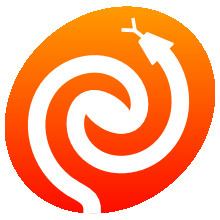Type Technical computing | Operating system | |
 | ||
Developer(s) The Astropy Collaboration Stable release 1.3 / 22 December 2016; 2 months ago (2016-12-22) Repository github.com/astropy/astropy | ||
The Astropy Project is a collection of software packages written in the Python programming language and designed for use in astronomy. The software is a single, free, core package for astronomical utilities due to the increasingly widespread usage of Python by astronomers, and to foster interoperability between various extant Python astronomy packages. Astropy is included in several large Python distributions; it is part of package managers for Linux and macOS, the Anaconda Python Distribution, Enthought Canopy and Ureka.
Contents
Core functionality
Core data structures and operations
File I/O
Computational utilities
Affiliated packages
A major part of the Astropy project is the concept of "affiliated packages”. An affiliated package is an astronomy-related Python package that is not part of the astropy core but has been suggested for inclusion as part of the project’s community. Such packages are intended to improve reuse, interoperability, and interface standards for Python astronomy and astrophysics packages. Current affiliated packages include:
A few additional affiliated packages are currently in development, including:
Development
Around the turn of the millennium the Space Telescope Science Institute started development of Python-based utilities to extend or substitute existing astronomical data analysis tools on a modern, object-oriented platform. Among the first projects were a replacement of the Command Language for IRAF with the Pyraf frontend, and the PyFITS interface to the Flexible Image Transport System. Since the existing Numeric module for handling vectors and arrays in Python turned out to be inadequate for large astronomical datasets, a new library better tuned for large array sizes was subsequently developed at STScI. Both libraries were merged into a new array package by Travis Oliphant in 2005–2006, creating NumPy, the now de facto standard for numerical data handling in Python. In the following years the existing software packages maintained by STScI as part of their stsci_python suite were ported to Numpy as well. This together with the more extensive SciPy computing environment provided a platform to develop customized scripts and applications for a variety of astronomical tasks.
By 2011, the use of Python in astronomy had reached significant levels. At the 2012 .Astronomy meeting, 42% of attendees (a plurality) preferred Python according to an informal survey. Many astronomy-related Python packages have been developed over the years, however without cooperation or coordination, which led to duplication and difficult interoperability between packages. There was also no easy way install all the required packages needed in an astronomer’s toolkit. A number of smaller packages are sometimes no longer maintained or unavailable, detrimental to long-term research programs and reproducibility. The Astropy project started in 2011, motivated by these existing difficulties and a desire to unite developers throughout the field of astronomy to coordinate the development of a unified set of Python modules for astronomers and reduce the confusion of available packages.
The Space Telescope Science Institute, operators of the Hubble Space Telescope, are merging the work on Astropy into stsci_python releases. PyFITS and PyWCS will be maintained solely within Astropy, with separate releases of these packages stopping, after the next release. PyFITS has been included as part of the Astropy project, as a result, the next release of STScI_Python will depend on Astropy for the PyFITS library instead of using this standalone release. Thus, future Hubble Space Telescope science and images will depend upon Astropy.
Use
Institutional users and developers
Publications
Books and scientific publications citing Astropy
